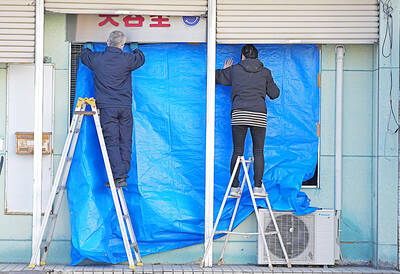Minister of Health and Welfare Chen Shih-chung (陳時中) yesterday said that although all pig parts containing ractopamine could be imported from the US, the delicious taste of local pork would give it an advantage.
There has been public debate over the health risks of eating US pork and beef since President Tsai Ing-wen (蔡英文) announced on Friday last week that the ban on importing US pork containing ractopamine and US beef from cattle older than 30 months would be lifted.
Asked what US pork parts could be imported, and whether ground meat containing local and US pork would be inspected under the new policy, Chen said that the government would allow all US pork parts to be imported and that mixed ground meat would need a label listing all countries of origin.
He made the remarks during a weekly news briefing at the Central Epidemic Command Center in Taipei.
Chen said he believes that the maximum allowable levels of ractopamine in pork recommended by the Codex Alimentarius Commission are science-based standards, but the Food and Drug Administration continues to collect data on local eating habits to set the best standard for the nation.
Chen said that “food safety is only one of the concerns” when asked why he said in a radio interview on Monday that most people would not experience negative health effects from eating pork containing ractopamine, even if they ate it every day for the rest of their lives, while the Council of Agriculture still insists on banning ractopamine from the local pig farming industry.
“Good taste and competitiveness are also important,” he said, adding that local pork is tasty without having to add ractopamine to the feed.
The existing methods of raising and slaughtering pigs produces safe and tasty pork — the advantage of domestic pork — so there is no need to change, he said.
Asked about a media report that cited a health practitioner as saying that the Ministry of Health and Welfare seemed to be pressuring ministry-affiliated hospitals to endorse the new import policy, Chen said that the ministry did not “pressure” them, but only asked them, as health professionals, to share health and nutrition information with the public.
The hospitals, as part of the public sector, should promote the government’s policies in their professional capacity, especially in rural areas where access to information is limited, Chen said.
Starting next week, the ministry would go to markets across the nation to demonstrate the use of the country-of-origin labels, he added.

Taiwanese were praised for their composure after a video filmed by Taiwanese tourists capturing the moment a magnitude 7.5 earthquake struck Japan’s Aomori Prefecture went viral on social media. The video shows a hotel room shaking violently amid Monday’s quake, with objects falling to the ground. Two Taiwanese began filming with their mobile phones, while two others held the sides of a TV to prevent it from falling. When the shaking stopped, the pair calmly took down the TV and laid it flat on a tatami mat, the video shows. The video also captured the group talking about the safety of their companions bathing

US climber Alex Honnold is to attempt to scale Taipei 101 without a rope and harness in a live Netflix special on Jan. 24, the streaming platform announced on Wednesday. Accounting for the time difference, the two-hour broadcast of Honnold’s climb, called Skyscraper Live, is to air on Jan. 23 in the US, Netflix said in a statement. Honnold, 40, was the first person ever to free solo climb the 900m El Capitan rock formation in Yosemite National Park — a feat that was recorded and later made into the 2018 documentary film Free Solo. Netflix previewed Skyscraper Live in October, after videos

Starting on Jan. 1, YouBike riders must have insurance to use the service, and a six-month trial of NT$5 coupons under certain conditions would be implemented to balance bike shortages, a joint statement from transportation departments across Taipei, New Taipei City and Taoyuan announced yesterday. The rental bike system operator said that coupons would be offered to riders to rent bikes from full stations, for riders who take out an electric-assisted bike from a full station, and for riders who return a bike to an empty station. All riders with YouBike accounts are automatically eligible for the program, and each membership account

A classified Pentagon-produced, multiyear assessment — the Overmatch brief — highlighted unreported Chinese capabilities to destroy US military assets and identified US supply chain choke points, painting a disturbing picture of waning US military might, a New York Times editorial published on Monday said. US Secretary of Defense Pete Hegseth’s comments in November last year that “we lose every time” in Pentagon-conducted war games pitting the US against China further highlighted the uncertainty about the US’ capability to intervene in the event of a Chinese invasion of Taiwan. “It shows the Pentagon’s overreliance on expensive, vulnerable weapons as adversaries field cheap, technologically